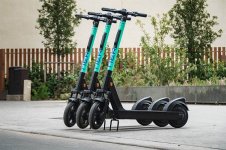fatty said:
Flippy has given good advice and I would defer to his judgement on discarding cells under 75%.
Don't build a pack with unequal numbers of parallel cells. Just distribute the cells such that each parallel string gets an equal number of better, worse, and total cells. To use your example, each parallel string gets 32 cells total, of which 13 would be better and 19 would be worse.
You can do this by "binning" the cells after testing -- literally put the cells into different boxes of "better" and "worse", or 1600-1700, 1700-1800, 1800-1900, and 1900-2000mAh. Then divide the number of cells in each box by 13s to find how many of each to put into each parallel string. You can widen the bins to make it easier, or narrow them to reduce string variance. You could even enter all the capacities into Excel to numerically minimize string variance.
I am actually entering them all into excel

Since i am going to test 700 cells i will probably have a lot of good and worse ones. so far i've tested a bit, i have already discarded the ones that are under 1800 into a separate holder. but maybe they are not that bad after all. it would be such a waste to just discard them, i want to make something useful out of them too. i am not thinking too many of them will be 2100mah, the ones in that end have tested at anywhere between 2105-2132. but the rest of the cells i am ordering in brackers of 2040-49, 2050-59 etc. i am sure that ordering them in a range of just 10mah isn't the best way, since a cell can show different results from test to test (but still in the same range, what i tested at 2045 today might be 2052 tomorrow etc).
However, one of the cells i tested had an IR of 10, i tested it in all 4 cell holders in the lii-500 and it showed similar IR, i am not sure what to do with that cell, it tested as the rest at about 2ah, but i am not sure of what to do with that cell. and i really need to look into more efficient way of testing them, i am even tempting to buy capacity testing units and build a big board with 10 or so of them, and then maybe get a cc/cv and put it at 42V and 1A and use one of the old 10S bms units and make a 10 battery charger with it. oh well, so far when i looked up things the liitokala is still the cheaper option unless i buy stuffs from china, but then i would be done with the testing when they arrive here. oh well!
A serious question now to both of you, i like you guys!
Your opinion. I will be operating the pack at a max 2kw, i don't want it to be heavier than the 13s33p. if i average the pack at 2ah per cell, it will be a little less than 3.2kwh. 0.63C discharge at full load.
1: I have the option to use 200 samsung/panasonic in the pack, (100 samsung is 2400-2500mah similar discharge C rating as the ones i am testing, the 100 panasonic is 2500-2600mah, datasheets say 10A discharge). In this case i will need to use 229 of the cells i am testing, and if i use the 229 best cells it might be a pack that have a cell average of 2200-2250mah, a 3.5kwh pack or more, discharge at 0.57C.
2: Just use the cells i am testing and don't mix in the samsung/panasonic cells.
When we are talking in terms of this low c-ratings, how much does it matter if you have a high output cell vs a lower output cell? From what i see in datasheets at discharge testing at higher A with a cell with lower IR you can draw a higher current but still have similar amount of mah, but with a lower rated cell as output A increases the mah.
I know the slightly higher rated pack will be cycled less times to deliver the same amount of energy, but apart from that at lower discharge rates, i hope both packs would be useful? not perfect in any way or form, but functional.
sorry for those long replies. i really appreciate your guidance and help, i really do. i am trying to gather as many ideas and opinions before i start, and as it looks right now i am testing 12-16 cells a day, it is fun, but the time between putting in each new cell in there is not fun.
thanks for all the ideas so far, i really do appreciate it! <3
 and since i already got 200 good cells, i will just pick the 229 better / best cells of what i am testing right now, so hopefully i'll be able to start welding the pack before i am done with testing them all.
and since i already got 200 good cells, i will just pick the 229 better / best cells of what i am testing right now, so hopefully i'll be able to start welding the pack before i am done with testing them all.

